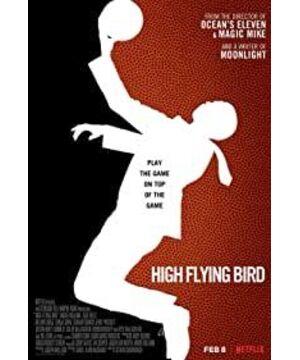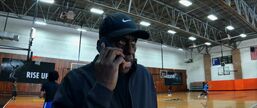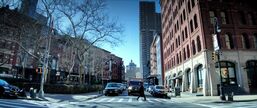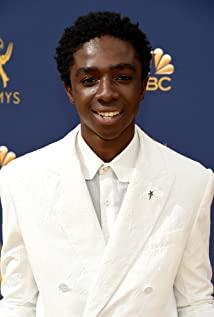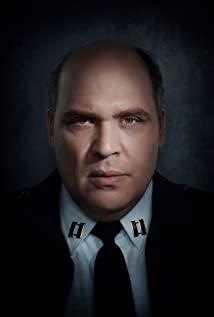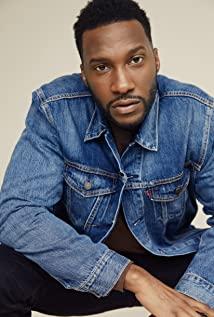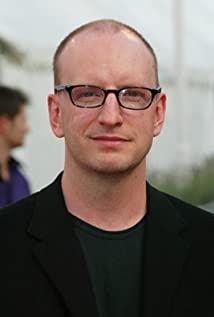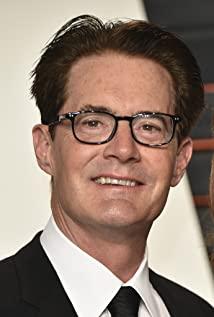Steven Soderbergh's films can be divided into two types: "commercial films" and "stylized author films". The former, like Eleven Arhats, is a very sophisticated and neat standard Hollywood commercial production. The latter, which this article mainly discusses, is known as a "pseudo-documentary" style. He is good at taking a large-scale system or event as the object, showing the operation of every link in the system and the reason and motivation of every change in the event in a detailed and orderly manner, and rarely has his own subjective emotions. Keep a very objective perspective.
For example, in his masterpiece "The Drug Network", he shows how America's vast drug trafficking system works: the drug trade that permeates everyday life under the surface light on this side of the United States (Zeta-Jones has no idea that her husband is a drug dealers), and Mexico, which is connected to the American trafficking market—the source of drug manufacture and supply, and a society where drug sales are open. Soderbergh uses the color of the picture to distinguish between the United States and Mexico, and divides the entire buying and selling market into multiple layers, carefully reproducing the entire process of the entire drug system from manufacturing to smuggling, to trafficking, and then to injection.
In another work, "Che Guevara", Soderbergh pays attention to Che Guevara's revolutionary experience, using a total of eight hours of upper and lower parts to fully demonstrate Guevara's journey from the beginning of the Cuban Revolution to the failure of the Bolivian Revolution. whole life experience. In the film, Soderbergh hardly shows any of Guevara's personal emotions positively. He just faithfully photographed the process of Guevara's revolution, and used scenes such as "Bolivian peasants watching Guevara's speech" and "Bolivian children being sick and disabled" to reflect "the reasons for the failure of Guevara's revolution", "Bolivia The people themselves suffer but still do not support the Guevara Revolution” and other objective phenomena.
Whether it is "Drug Network" or "Che Guevara", Soderbergh has always maintained several characteristics: 1. First of all, the length of his films is relatively considerable. "Che Guevara" is a huge production with a total of 8 hours in the upper and lower parts. The ample time capacity gives him enough room to fill in enough materials, arrange enough details, sort out the order clearly, and slow down the rhythm to prevent the audience from being unable to keep up, so as to gradually and comprehensively show the entire huge system and events. . At the same time, the considerable time of the film is closely related to the second feature of Soderbergh's films. 2. Objectivity. From the lens point of view, most of Soderbergh's shots maintain sufficient objectivity, and rarely use the subjective shots of the characters and other shots that easily bring the audience into the characters' emotions and perspectives. From a narrative point of view, he rarely expresses his views and attitudes towards this system and this event in his narrative, but only objectively shows the operation mode, development process, motives and causes of change. He does not lead the audience to agree with his own point of view, but allows the audience to think about this objective event and come to their own point of view. Therefore, without directly leading the audience to accept the point of view, he has to show enough details to make the event performance complete and comprehensive enough so that the audience can make informed thinking and have opinions, so the length of the film is the key necessary.
In this "High Flying Bird", Soderbergh takes advantage of the lockout event caused by labor-management negotiations to focus on the NBA's operating system. In this film, Soderbergh divides the entire NBA league into three parts: the management of the team, the labor of the player's agent, and the players themselves. Through this event, Soderbergh demonstrated the rules of the NBA league as a business system.
Interestingly, Soderbergh lets his protagonist, an agent, change his identity as the film progresses. First of all, in the first scene, the protagonist has a dialogue with the NBA rookie he represents, teaching him "how to do" and "how not to do" in order to comply with his contract and the league's business rules. At this time, what he represents is the labor force composed of brokers; in the next scene, the protagonist returns to the brokerage company, talks with his boss, expresses his views on the problem of too many brokers, and expresses his concern for Protection of player interests. At this point, what he represents has become the player side (boss: So are you on their side?). Therefore, in the beginning part of the film, the identity and interests of the protagonist have been constantly swaying. And this kind of swing seems to represent his inner swing in the lockout event.
However, next, the protagonist's stance begins to become firm. The firmness of this stance is demonstrated by the way the shots are handled. In most of the film's passages, the main composition is a lot of dialogue. And the shots of filming dialogues are a large number of regular front and back shots. It is worth noting that in the passages where the protagonist talks with the player on behalf of the agent, and talks with the boss of the economic company on behalf of the player, Soderbergh uses both front and back. This back-and-forth effectively underscores the conflict and confrontation between the two sides—symbols of labor negotiations. However, from the scene where the protagonist, the female assistant and the rookie player are in the same apartment, a change occurs: the beginning of the paragraph is a dialogue between the protagonist and the player, but the camera stops on the female assistant, and then the female assistant talks to the protagonist, but The camera stops at the player. In this way, Soderbergh deliberately emphasizes the weakening of "front and back"-----the dialogue between the protagonist at this time is no longer a "confrontation" with the opponent. It can be seen that from the beginning of this scene, the protagonist began to firmly represent the interests of the players. In the subsequent scene where the protagonist talks to the coach of the youth basketball training camp, when the protagonist interacts with the old coach and young players, the camera also uses a large number of simultaneous shots instead of front and back, symbolizing that the protagonist represents the player. A continuation of a stand.
The change and firmness of the protagonist's interests and positions also brought out what Soderbergh wanted to show most: the due status of players in the league. In this film, the NBA is a system that is completely dominated by commercial interests—the agent wants to make sure that his players do not violate the commercial contracts signed with the team, so that the players can get salaries and they can get The team wants to get more share and get more cake from labor. Most of the dialogues in this film revolve around commercial topics such as contracts, sharing, and salary extraction. These are precisely the focus of negotiations between labor and management, and are the main factors that cause the NBA to shut down. The operation of this league in today's era is not dominated by players as the public thinks, but dominated by the parties concerned around commercial interests. At the beginning of the film, Soderbergh uses the metaphor of two shots to illustrate this point: in the first scene, the first shot is the office building outside the window - a commercial place; then the shot goes to the waitress On the body, follow the waitress to go to the protagonist to check out and collect money----money. At the same time, the discussion between the protagonist and the rookie sounded on the screen. This combination of sound and picture neatly metaphors the essence of how the NBA operates: not players nor basketball, but business and money. In the subsequent films, we can also see more clearly and accurately that the suspension of labor and capital and the suspension of the alliance were indeed caused by the inability of the two parties to reach an agreement on the sharing of commercial profits.
Compared with the labor and management sides, Soderbergh has made the greatest effort to show the players in the league. According to common sense, they should be the most important core components of this alliance. But in the film, they received the double high pressure caused by the control of the broker and the dispute between the labor and the capital. First of all, they signed a contract with the team and entered the league, so they also accepted the restrictions brought by the rules of the NBA league. In order to ensure the continuation of this contract and ensure its own share, the agent must always restrain the players' behaviors that "may violate the rules of the league". For example, in the first scene, the protagonist acts as an agent and keeps warning rookies to "do this" and not "do that." On the other hand, the suspension of labor and management due to the uneven distribution of their own interests has caused players to lose the opportunity to play and lose their important original intention of joining the league---as the rookie said in the first scene: in this It's my dream to play in the league. In the film, we can also see the impact of the suspension of labor negotiations on the players many times: first of all, the old coaches of the youth basketball training camp need to rely on the event days attended by NBA players to obtain ticket revenue to buy new jerseys for their young players, However, the lockout made NBA players subject to contracts and could not participate in this event this year (after the protagonist took the players to participate in this event, the leaders of female agents involved in labor-management negotiations put forward that "they participated in the event privately as active NBA players, This is not in line with league rules" protests); and NBA players themselves have lost their motivation to play because of the lockout -- rookies "don't have sex before the game", but have sex before the event day this year; between players The conflict should have been clearly resolved in person (in an interview, Towns said), but the main team and the rookie were arguing on Twitter. From this, we can see that in the lockout caused by the commercial interests of both employers and employees, the enthusiasm of the NBA players themselves to play (this scene has to be reminded of the Rain Man Kemp who overeating after the last lockout), and the league The surrounding training camps, these things related to "basketball" itself, have been hit hard. Players entered the league with the initial dream of "playing in the NBA", but had to accept many things beyond playing, learn business rules not related to play, and adapt to the "non-basketball part" of the league (in the NBA in the opening credits). During player interviews, Speaking: After we run for the election, we will go to an event to learn the rules of this league; Downs: When you are selected, you will have a sense of honor on the day, but then you have to work hard to make yourself in this league adapt to survive. ). Players who simply want to play are not the core of this league at all. They are just commodities and selling points that generate commercial value for this league. The real core is the labor and management who are active around this business value. They distribute business profits and establish the rules of the league with business as the core. Players are only the most passive and weak party in the league. (Protagonist's line: They built a whole new sport out of basketball).
However, when the film progresses to the second half, the status of the players has undergone a fundamental change. The opportunity came from the meeting between the main players of the New York team and the protagonist. The player's mother can be seen as an ideal player template: defending all her interests resolutely and toughly against the agent who tries to split the money ("The money I make has nothing to do with you") , and actively shake the established rules of the league itself (the older brother who joined the NFL was initially boycotted by the league, but eventually made a name for himself). And through the conversation with her, the protagonist who represents the player's position determines that this person can cooperate (in the face of the tough player's mother, his response is "very good") and also clarifies his plan: to create two players on the event day. One-on-one duels, jumping out of the league, and using basketball itself to shake the stalemate between labor and capital. In the end, this duel also aroused the enthusiasm of the fans (little fans who were excited to dance), and turned into a commercial streetball game that jumped out of the NBA league, which led to a rapid reconciliation between the labor and management - the consciousness of both labor and management Now, players and basketball games are the core that this league should establish. Without players and games, all the commercial profits of this league would be impossible. It can be seen that in the second half, Soderbergh emphasized the significance of the players to the NBA through the counterattack of the players. In the current rules of the game, players are just slaves to oppression and moderation, but they shouldn't be slaves, they should be the most important part of the league (Black coach habit: Whenever someone says slavery on the court, read it line "Lord bless his black brother").
And interestingly, in the final part of the film, the rookie fires the protagonist as an agent. First, it reflects the rise of status on the player side and the anti-moderation on the agent side. Also, the reason for the dismissal: the protagonist didn't really promote the street race to create a new alliance, it was just his way of advancing labor negotiations. This is a very realistic scene: in reality, it is impossible to create a new league without the NBA brand, and it is impossible to obtain the same commercial interests as the NBA, and what follows is that both the labor and management and the players The interests of itself, the training camps around the NBA and other links are damaged, and the entire ecology is unsustainable. The protagonist knows this, so he must maintain the system and ecology of the existing alliance. What can be changed is only the improvement of the status of the players within the existing system. Only when the status of players in the existing system is improved, can they be guaranteed their interests, and at the same time, they can play games and become "high flying birds" (the title of high flying birds, which can symbolize the status of players at the same time, "high flying" and the league should pay attention to it. "A player's dream of flying high in the game").
It can be said that this very realistic ending is a supplement to Soderbergh's lack of faithfulness to the film's objectivity and reality reflection. This film, as Soderbergh's work, is deeply flawed. The core flaw is that the solution to the stagnant negotiations between labor and capital is too idealistic. Just imagine, how can the one-on-one duel of individual players and the individual behavior of an agent shake the systematic and complete NBA league? How can a player's "dream" change the huge NBA business system? The factors contributing to the change in bargaining between employers and employees, the most important part of this major event, are simply too weak and unrealistic. Therefore, as a Soderbergh film, which has always been known for its objectivity, fidelity and integrity of reflecting reality, the flaws of this work are really very serious. In addition, Soderbergh used more lines and plot development in this film than before, which guided the audience's point of view to a certain extent (such as some speech-style and title-style lines: "They established a new games", etc.). This makes the film lose its objectivity, a phenomenon not often seen in Soderbergh-style films. These flaws may be due to the time limit of the film. In his previous works, Soderbergh had plenty of time to restore all the details in every detail, and gradually restore the whole picture of events and the operation of the system in an orderly manner, so that the audience has the conditions to "self-identify". think" to come to an opinion. However, since this film is only a "network big" level work of Netflix, the space obtained by Soderbergh is really too small. It adopts a leading approach and ends the negotiation between labor and management with a turning point that is easiest to express and understand, but less realistic.
Therefore, as a work that reflects the NBA system and the negotiation between labor and management, and belongs to Soderbergh's "stylized film" side, some of the films in this film have lost the consistent characteristics of Soderbergh's stylized works, and some are too ideal. doctrine. But since this is just a Netflix title, perhaps we can't ask too much of Soderbergh. In reality, the NBA can only be a business-first league. It is impossible for players to turn themselves into masters. Now, and in the foreseeable future, they will still be subject to the restraint of agents and teams based on business rules (such as Richie Paul influences Anthony Davis' pressure on Daigo, and Ainge trades Thomas). And this is also the inevitable requirement and need of reality.
View more about High Flying Bird reviews


